Water Conservation Program Implementation

The Schematic of the Rainwater Harvesting System at UGM for procuring alternative sources of water; rainwater that falls onto building rooftop flows through gutters and then undergoes a filtering processing before settling in the collection tank. From here, the rainwater is pumped upwards into a storage tank, and can be used for watering gardens or flushing the toilet.

The volume of rainwater collected at the Dental Learning Center is recorded monthly by a designated worker responsible for this task; based on the graph, the debit of rainwater consumption varies each month, the highest use being in March over 70 liter and the lowest in April at 30 liter.


The first phase in rainwater harvesting is collecting rainwater that falls onto the rooftops; on the left is rainwater gutters at the Faculty of Biology, one the right is UGM’s Main Library


Rainwater that flows through the gutter to the ground undergoes a filtration process before entering a collection tank; this is a tank at the Faculty of Biology (left) and the UGM Main library (right).

The underground collection tank at UGM Residence is not buried below ground.
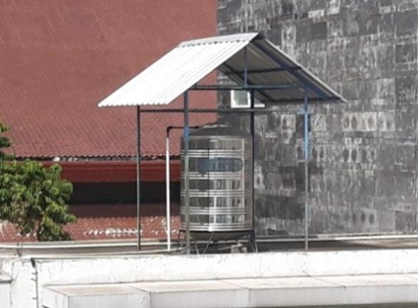



UGM’s water storage tanks.
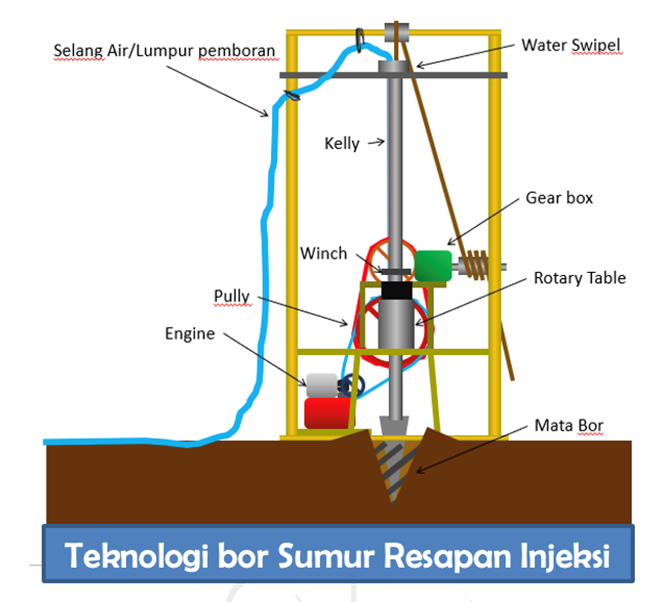
UGM also has Injected Rain Harvesting Systems using drills and infiltration wells. In an injection infiltration well, rainwater flows directly from gutters through a closed pipe into the well. This technology is efficient for groundwater conservation as the rainwater is uncontaminated. It requires minimal space, using only a 10 cm diameter pipe and a depth of over 3 meters.

An injection recharge well product is a system or device used to capture rainwater and direct it into the ground through a specialized recharge well. This product includes pipes and filters to ensure that clean rainwater infiltrates the ground efficiently, helping to replenish groundwater reserves.
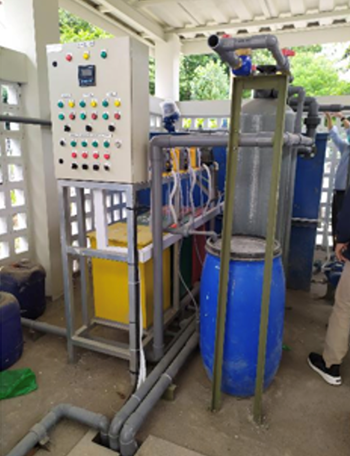


This is an injected rainwater harvesting system at one of the campus’s new Learning Centers

This is the distribution of infiltration wells at UGM student housings, there is a total of 294 infiltration wells.
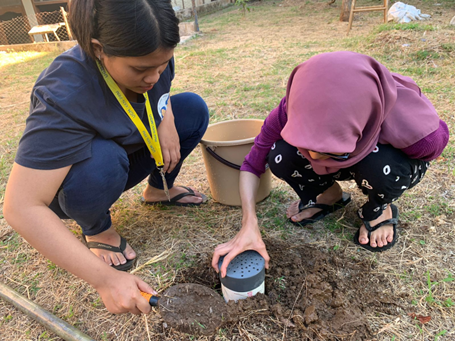
On campus, rainwater absorption can also be aided by biopores. UGM instals biopores each year, and students help to install more biopores on campus through community service programs. This year, UGM installed 10 biopores in PIAT to help rainwater become absorbed easier into the ground.
The photos below show the motorbike parking area, rainwater harvesting in several faculties, water harvesting in Wisdom Park, PIAT, and several faculties. The motorbike parking area at UGM Central Library uses porous pavement to make water seep into the ground more easily. Rainwater harvesting is spread across several faculties, such as the Faculty of Humanities, Social and Political Sciences, Engineering, UGM Residence, and many more. Also, there are three water reservoirs (Embung) at Wanagama Forest.







There are a total of 15-16 water reservoirs in PT Pagilaran UGM. The water is used for watering tea plants at a height over 700m. The water is also used to exterminate pests and apply fertilizer.

Map of the clean water reservoirs on campus, on the East and West side. All clusters have water reservoirs and nearly all buildings do as well. The total adds up to 38, with 19 on the East side and 11 on the West side of campus. The ones dotted blue are active and the ones dotted red are inactive. You can also see the location of wells.

UGM has a clean water system called SPAM TOYAGAMA which also produces drinking water for the campus community. This diagram describes the process of turning collected water into drinkable water.

To maintain the quality of campus drinking water, the Toyagama system goes through routine operational and maintenance measures.


The layout of all Toyagama water fountains and installed water dispensers on the East side of campus (left) and on the West side of campus (right).
Sources: 6.4.2 Water Conservation Program Implementation in UGM.docx
Water conservation is the responsible and efficient use of water resources to reduce waste and preserve its availability for future generations. It involves taking action to improve the effectiveness of water use through various means, such as providing a means for water-savings and using alternative water sources. For years, UGM has implemented and developed several water conservation programs at Universitas Gadjah Mada (UGM).
- Each year, UGM conducts routine maintenance and manages its rain harvesting systems.
- The campus also has injected rain harvesting systems using infiltration wells.
- Other programs focus on allowing more rainwater to be absorbed into the ground, through installing more biopores within the campus area, installing porous pavements, and maintaining our rainwater sewages.
- UGM also has several large ponds at Wanagama Forest, UGM Agrotechnology Innovation Center (PIAT), Wisdom Park, and PT Pagilaran (up to 16 ponds) for rain retention.
- The water from one of UGM’s wells at Umbul Pace located inside Wisdom Park is processed into drinkable water for the campus community to consume, and use for hygiene and sanitation: https://toyagama.ugm.ac.id
Water Recycling Program Implementation


Total number of greywater usage; 80% of greywater is used per year for watering plants. First phase of the greywater recycling system is capturing used water from various sources on campus. Total number of greywater usage; 80% of greywater is used per year for watering plants. The first phase of the greywater recycling system is capturing used water from various sources on campus. The picture below shows the Schematic of The Sewage Treatment Plant (STP) or Biological Treatment Process for Greywater (left) and Schematic of the Water Treatment Process for Greywater (left). Several faculties, including the Faculty of Engineering, have implemented a greywater recycling system.



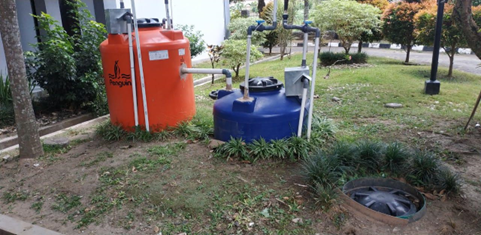


A water recycling program is the process of collecting, treating, and reusing wastewater for various purposes. Through these programs, we can reduce the need for freshwater and minimize environmental impact. Some pictures above depict the Ground collector tanks at the UGM residence where the greywater resides after finishing the Water Treatment process until it is needed. Also, the greywater recycling system on the rooftop of Kinanti Residen (one of UGM’s student dormitories) is used for flushing toilets and watering gardens.
Water from sources like sinks, showers, or stormwater is treated and reused for non-potable applications such as irrigation, toilet flushing, or cooling systems.
UGM has several ongoing water recycling programs:
- Greywater recycling: A system that captures water from dorm showers and sinks, treating it for reuse in landscaping irrigation.
- Rainwater harvesting: A system collects rainwater from rooftops and reuse it for toilet flushing or garden irrigation. UGM uses both a rainwater harvesting system and an injected rainwater harvesting system.
Other water recycling programs include: the recycling system used for the University Mosque Pond, the Faculty of Animal Science using recycled water from the canteen. UGM uses two methods of water recycling: upflow and downflow.
References:
